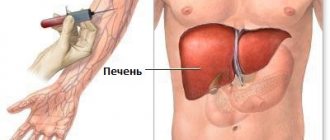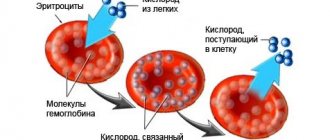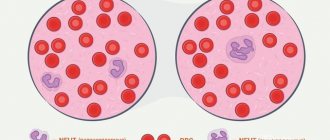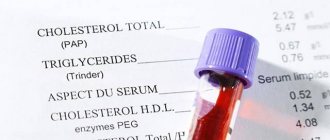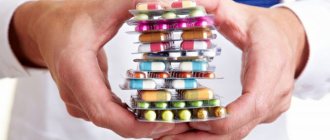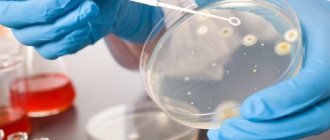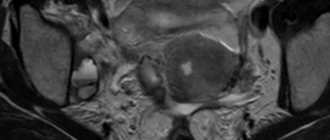What other nutrition-related dangers await patients with chronic renal failure?
They exist and are associated with the fact that, in case of progression of deficiency, the level of potassium in the blood of patients increases. A complex mechanism that occurs in the renal tubules is responsible for this: potassium ceases to be removed from the blood in the required volume by the kidneys. This naturally causes it to accumulate in the blood. As a result, serious, sometimes very life-threatening, disturbances in the functioning of the heart occur. For this reason, every person suffering from chronic renal failure, when potassium in the blood increases, is simply obliged to follow a diet with a sharp restriction of this component in food. A potassium level of 3.5-5.5 mmol/l is considered normal. Its determination is possible as a result of a blood test taken from a vein.
Dried fruits are famous for the highest potassium content. After them in the ranking come potatoes and sorrel, as well as bananas. This is followed by sea fish, fruits and vegetables, and meat. There is extremely little potassium in sugar, cereals, and dairy products. If a person has chronic renal failure and there is a tendency for potassium levels to increase, then it is better to completely exclude the foods listed above from the diet. The consumption of other fruits and vegetables should be limited to 200 g per day. As for meat and fish, these products are limited on their own if you follow a low-protein diet. A set of calories without potatoes is possible due to sour cream, marmalade, marshmallows and cereals.
Recipes for dishes that are allowed for kidney disease
Fasting days mean the consumption of one type of product during the day. Nutritionists recommend that patients with kidney pathology practice carbohydrate fasting days. Possible options:
- cucumber;
- oat;
- apple;
- watermelon;
- berry;
- vegetable;
- fruit.
Therapeutic nutrition for kidney diseases on fasting days allows you to consume 1.5 kg of fruits, vegetables or berries per day. In this case, you only need to select one type of product. All food should be divided into five to six servings.
During unloading, vegetables are consumed raw, stewed or boiled. You can make salads and season them with a small amount of vegetable oil. It is acceptable to use sour cream or natural yogurt with a low fat content.
- 300 g pumpkin;
- 200 g lentils;
- 100 g fresh carrots;
- 100 g tomatoes;
- 100 g potatoes;
- 1.5 liters of water;
- 30 ml vegetable oil;
- herbs, spices - to taste.
- Rinse the lentils thoroughly and soak overnight.
- Wash, peel and chop the vegetables.
- Make a cross-shaped cut on the tomatoes, put them in boiling water, remove the skins, and mash the tomatoes with a fork.
- Pour oil into a saucepan and add carrots.
- Dry the pumpkin and potatoes and place in a container. Simmer for 15 minutes.
- Add lentils, pour in water.
- After boiling, cook for 20 minutes.
- Add tomatoes and spices. Cook for 15 minutes.
- Add the greens at the end, turn off the soup and leave covered.
- Blend a warm dish with a blender to give a tender consistency.
Green Caesar
- 120 g tofu cheese;
- ½ bunch of arugula;
- ½ bunch of Romaine lettuce;
- ½ avocado;
- 2 tbsp. l. pumpkin seeds;
- 1 tbsp. l. sesame and olive oils;
- 1 tbsp. l. lemon juice.
- Tear the greens with your hands and place on a plate.
- Cut the tofu and avocado into cubes.
- Place ingredients on a plate.
- In a separate container, mix lemon juice, olive and sesame oils.
- Pour the dressing over the salad ingredients.
- Stir and sprinkle with pumpkin seeds before serving.
Is salt restriction necessary in this case?
There is no need to salt food, and not only in the case of chronic renal failure, but also in case of arterial hypertension (regardless of the origin). And there is absolutely nothing impossible or terrible in this restriction, because sodium, which is part of salt, is present in almost all products. By giving up salt, you will in any case receive the amount of sodium necessary for the normal functioning of the body. Extremely salty foods traditionally include cheese, meat and sausage products, canned fish and vegetables. All of them are heavily salted during the manufacturing process. Therefore, you should definitely not eat them.
Diet for elevated blood creatinine in men and women
There are no significant differences in nutrition based on gender. Men tend to have more muscle mass, so it is acceptable for them to increase their protein levels to 70 grams. This is the maximum amount for athletes with a total body weight of more than one hundred kilograms. Of course, due to illness, muscle mass will decrease over time.
Women with low body weight - about 45-55 kg - should limit their protein intake to a maximum of 50 grams per day. If the condition is acute, then a reduction to 30-35 grams may be necessary.
It makes no difference what kind of protein is considered - animal or plant origin. Both types are toxic to kidney damage and stimulate stress, which will ultimately inevitably lead to an increase in creatinine and urea levels.

View gallery
Is it necessary to add anything to the food?
The kidney is an organ whose main function is to regulate the balance of several substances in the body. Among them:
- sodium;
- potassium;
- calcium;
- phosphorus;
- magnesium;
- hydrogen ions.
Maintaining normal levels of these substances in the blood and tissues is extremely important. The reason is as follows: for normal functioning, the cells of the human body need to maintain the permanent chemical composition of their own internal environment. This is a kind of solution, which, according to one of the most widespread theories, is similar in chemical properties to the environment in which life on our planet originated. In other words, our cells contain a drop of the most ancient biochemical material with long-established characteristics. And if the usual parameters for the content of vital substances, formed over thousands of years, change, the cells stop performing their assigned work, and in some cases simply die. The result is disastrous - disruption of the functions of the brain, heart function, skeletal muscles, etc. To avoid this, the level of substances dissolved in the blood delivered to the cells must be stable, and the cells must maintain their internal environment without taking into account changing external conditions, because the composition of the blood is constantly regulated , including the kidneys. If, due to illness, their work is disrupted, then homeostasis (constancy of the composition of the internal environment) is disrupted. This doesn't just apply to sodium and potassium.
Now it’s worth paying a little attention to the metabolism of substances such as calcium, phosphorus and hydrogen ions. These are the most important substances; the condition of the skeletal system, cardiac and other muscles of a person, as well as the central nervous system and blood coagulation system depends on them. In the case of chronic renal failure, the excretion of phosphorus in the urine is impaired. That is why its level in the blood increases. The result is a decrease in calcium levels in the blood. An increased phosphorus content causes itchy skin and negatively affects the cardiovascular system. An insufficient amount of calcium in the blood causes disruption of muscle function and the functioning of the circulatory system. As a result, weakness appears, convulsions and bleeding occur. If there is a lack of calcium in the blood, it begins to be washed out of the bone tissue, and the bones become brittle, fragile, grow poorly, and pain occurs. In addition, with chronic renal failure there is a disturbance in the metabolism of vitamin D in the kidneys. The result is the development of its deficiency and the emergence of a condition that is similar to rickets in young children. For this reason, it is worth taking care of getting enough calcium into the body. Most of this substance is found in dairy products, eggs, dried fruits, cereals, and some vegetables. Please note that dietary phosphorus intake should be limited. The richest foods in phosphorus are milk, egg yolk, beef, cottage cheese, wheat bread, dried fruits, walnuts, and cereals. When following a low-protein diet with a low potassium content, you limit your intake of meat, cottage cheese, eggs, bread, nuts and do not eat dried fruits. Accordingly, you automatically adhere to a low-phosphate diet. For this reason, cereals can be consumed in any quantity. On the other hand, it is impossible not to notice that foods rich in calcium contain a lot of either phosphorus, protein, or potassium, or all the substances listed earlier are present at once.
Reasons for increased indicators
There are a large number of factors that can provoke an increase in creatinine concentration in the blood. The main causes of the pathological condition:
- Problems with blood circulation. There is insufficient blood pressure in the kidneys, and this reduces the degree of filtration of primary urine and the excretion of creatine.
- Impaired kidney function. This may be polycystic disease, chronic pyelonephritis and glomerulonephritis.
- Necrosis, gangrene and destruction of muscle tissue.
- Extensive injuries and burns.
- Hyperthyroidism. There is an increased synthesis of thyroid hormones. This pathological process leads to the breakdown of muscle tissue.
- Radiation sickness. Ionizing radiation causes the body's cells to gradually begin to deteriorate.
Hypercreatininemia can occur not only due to pathological changes in the body, but also under the influence of physiological causes. These include the following factors:

- elderly age;
- prolonged fasting;
- active growth of the child;
- large muscle loads;
- pregnancy and lactation;
- a strict diet that causes muscle breakdown;
- using muscle enhancing products that contain creatine.
It is recommended to repeat the creatinine test several times, as there is a risk of laboratory error. If the norm is exceeded, the doctor prescribes additional tests.
Interesting article: Diet features based on blood tests: food compatibility
What is the possible way out of this situation?
It's very simple - calcium should be taken separately, in the form of tablets or powder. Calcium carbonate is optimal for this purpose. It is perfectly absorbed and has an excellent ability to bind phosphorus in the intestines, limiting its entry into the blood. To calculate the daily dose of calcium carbonate, you need to seek the help of a nephrologist, and you can buy the drug at almost any pharmacy. Vitamin D is often added to such drugs for better absorption. Naturally, all this is done on the recommendation of a doctor and under constant monitoring (tests must be taken at least once every three months). In addition, it should be remembered that for some diseases (for example, urolithiasis), these recommendations are not relevant, and the diet must be discussed with a specialized specialist.
About the importance of acid-base balance
Another important process is maintaining the acid-base balance, which is characterized by the “pH” indicator. This parameter reflects the content of hydrogen ions, and, as a result, the acidity of the medium or solution. In a normal state, the blood has a slightly alkaline reaction (normal pH is 7.35). If the pH value is less than 7.35, then there is an excess of acids in the blood; if it is more, the level of alkalis is exceeded. With chronic renal failure, as well as with a number of other conditions, the kidneys lose the ability to excrete hydrogen ions in the urine. In other words, excess acid is not removed from the body, and accordingly, the blood becomes too acidic, the pH is reduced to 7.2 or lower. To compensate for these changes, the lungs are turned on, which retain carbon dioxide (alkaline in its properties) in the body. As a result, breathing becomes harsher and various secondary metabolic disorders occur.
This problem can be partially solved through a diet that includes alkaline foods. One of them is considered alkaline mineral water, for example, Borjomi. But here lies the danger: it contains alkali in the form of sodium bicarbonate (bicarbonate). And this substance helps increase blood pressure, especially in renal failure. Therefore, Borjomi is drunk 1-2 glasses a day with 1-2 teaspoons of drinking water, unless otherwise prescribed by a doctor.
Varieties of diet No. 7
When prescribing a certain type of diet for sick kidneys, the doctor takes into account the function of the damaged organ - the presence or absence of kidney failure. With different pathologies, kidney function is impaired to varying degrees.
| Table number | Pathology |
| 7 | Nephropathy, renal failure in pregnant women, acute stage of nephritis, glomerulonephritis in remission |
| 7A | Chronic nephritis accompanied by renal failure, glomerulonephritis in the acute phase |
| 7B | Nephritis in the acute stage, chronic glomerulonephritis in the acute stage, transition from table 7A |
| 7V | nephrotic syndrome in the chronic stage |
| 7G | renal failure in the last stage, connection of an artificial kidney (for hemodialysis) |
Diet 7A implies a complete abstinence from salt. Patients should give preference to foods of plant origin. The daily protein intake cannot exceed 20 g. Adhering to this principle of nutrition is allowed for a short period, since the diet is not balanced.
It is worth switching to table No. 7B when azotemia decreases and the pathological process subsides. The daily protein requirement in it increases to 40 g. With improvement, with the permission of the attending physician, the patient moves to table No. 7.
Diet No. 7B is characterized by an increased amount of protein food. You can consume up to 125 g of protein per day. This type of diet 7 is used for kidney diseases, which are characterized by the loss of proteins from the body. They are excreted in urine. It is necessary to replenish supplies in a timely manner. Table No. 7G is indicated for patients on hemodialysis. The allowed daily salt intake in this type of diet reaches ½ teaspoon of salt, protein - up to 60 g.
